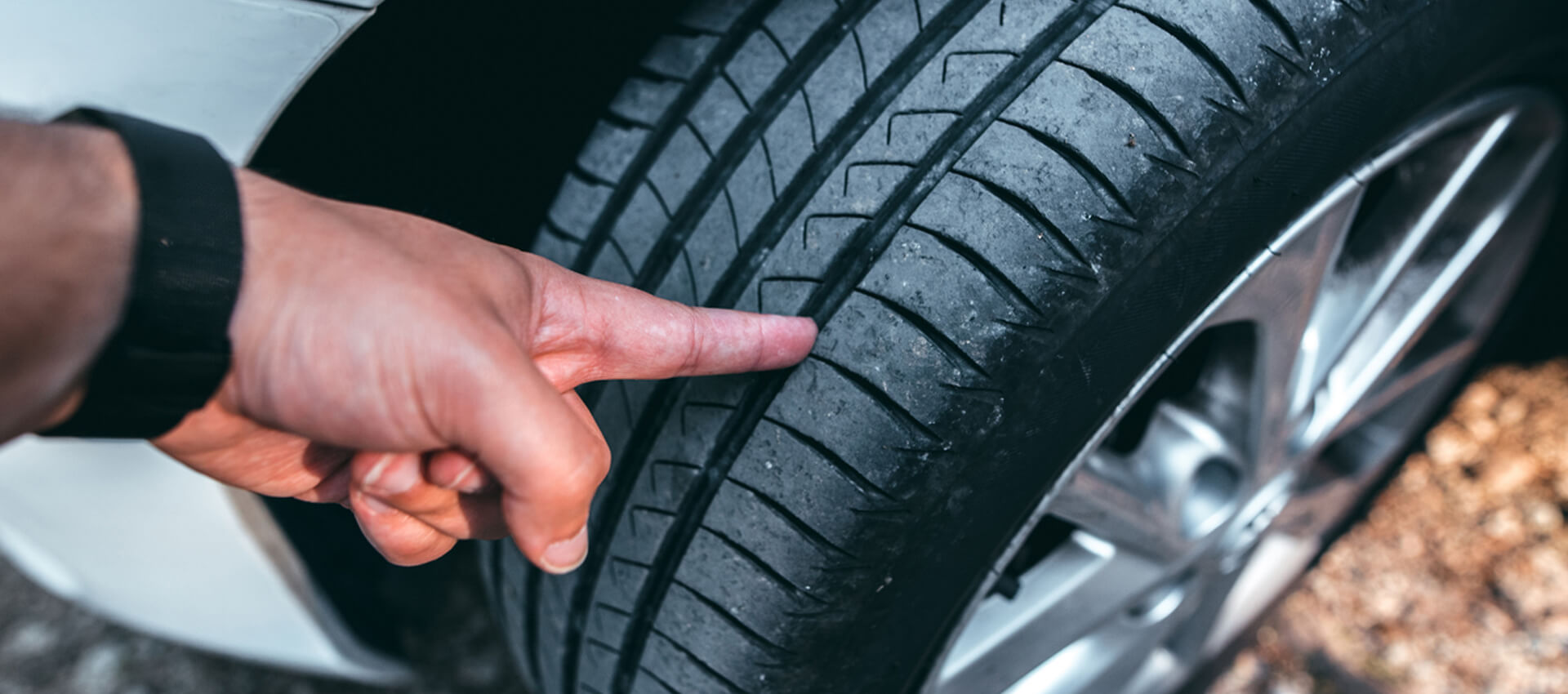How to check your tyre tread and stay safe

So why is it so important you know how to check your tyre tread, and what the correct tread for your car is?
Do you know how to check your tyre tread? Your car’s tyres are the only part of the vehicle that makes any contact with the road surface and they play a critical role in the handling (such as the steering and braking) and safety of the entire vehicle.
Therefore it’s essential that you know how to check your tyres for any defects, general wear and tear, and how you check your tyre tread.
Follow our guide below to make sure that you understand the legal requirements about your tyres and tread depth.
What is the legal depth for your tyres?
The minimum depth of tread on your tyres is 1.6 millimetres, across the central ¾ which is 75% of the tread around the complete circumference of the tyre.
If your tread depth is between 1.6 and 3mm then it is time to start thinking about ordering a new set of wheels for your ride!
For safety reasons it is recommended that you replace your tyres before the legal limit is reached. Many vehicle manufacturers recommend replacing at 3 millimetres.
It’s always better to be safe than sorry, so check your tyre tread regularly!
How do I measure and check my tyre tread depth?
A quick visual check of your tread depth can be made by simply looking at the wear indicators which you’ll find in the grooves of the tread pattern.
However, a more accurate and reliable way is to use a depth measuring gauge. It’s small enough to keep in the glovebox and will give an accurate measure of the tread depth of your tyres at all times.
The 20p test to check your tyre tread
Alternatively, you can use the quick and simple 20p test. Insert a 20p coin into the lowest tread depth of your tyres. If you can’t see the outer rim around the edge of the coin, then your tyre is safe and has a minimum of 3mm tread depth.
If you CAN see the rim then your tyre tread is less than 3mm and should be checked by a professional.
How often do I need to check my tyre pressure?
As many of you are aware the UK gets its fair share of bad weather, so the safest option is to change your tyres when the depth gets down to 3mm as a recommended depth. In an ideal world, you should check your tyre tread depth and pressure at least once every two weeks, and at the very least once a month. Safe and correct tyre treads are vital especially when travelling on long journeys and on motorways.
Interesting facts worth knowing!
- At 1.6 millimetres in wet weather, it takes an extra car length (8 metres) or 50% further to stop at 50 mph than if your tread was 3 millimetres.
- A regular check of your tyres can help you to avoid 3 penalty points and £2,500 in fines (per tyre) for having tyres worn beyond the legal minimum limit on your vehicle.
- Legal tyre tread results in an MOT failure but also a fine and 3 points on your licence per illegal tyre.
- The cost of replacing your tyres earlier would add just £20 a year on average to the cost of motoring, that’s just 39 pence per week. Continental Tyres 2006
- Your tyres are the only contact your vehicle has with the road. At 1.6mm of tread depth, your tyres are only 55% effective compared to new. This means your brakes are also only 55% effective. (Tests by Continental at MIRA 2004)
- During its life, the average tyre will rotate more than 26 million times. It could cover 30,000 miles which is more than once around the world. The circumference of the earth is 24,902 miles at the equator. (Continental Tyres 2006)
Top Winter Safety Tyre Tips
TyreSafe have created some top tips to help you stay safe on the roads this winter:
- Make sure your tyres have adequate tread depth to keep you safe and legal by taking the 20p test
- Ensure your tyres are properly inflated and checked at least once a month and before any long journeys
- Check the condition of your tyres by looking for any lumps, bulges or cracks and remove any objects embedded in the tread
- When checking the tread, pressures and condition, don’t forget the spare
- Consider fitting winter weather tyres for the whole winter period. At temperatures below 7 degrees Celsius, they provide much better safety and grip
- Remove wheels or jack the weight off any vehicles’ tyres that will not be used over the winter months such as caravans, horseboxes or motorcycles
- Visit your nearest participating tyre dealer for a free tyre safety check


